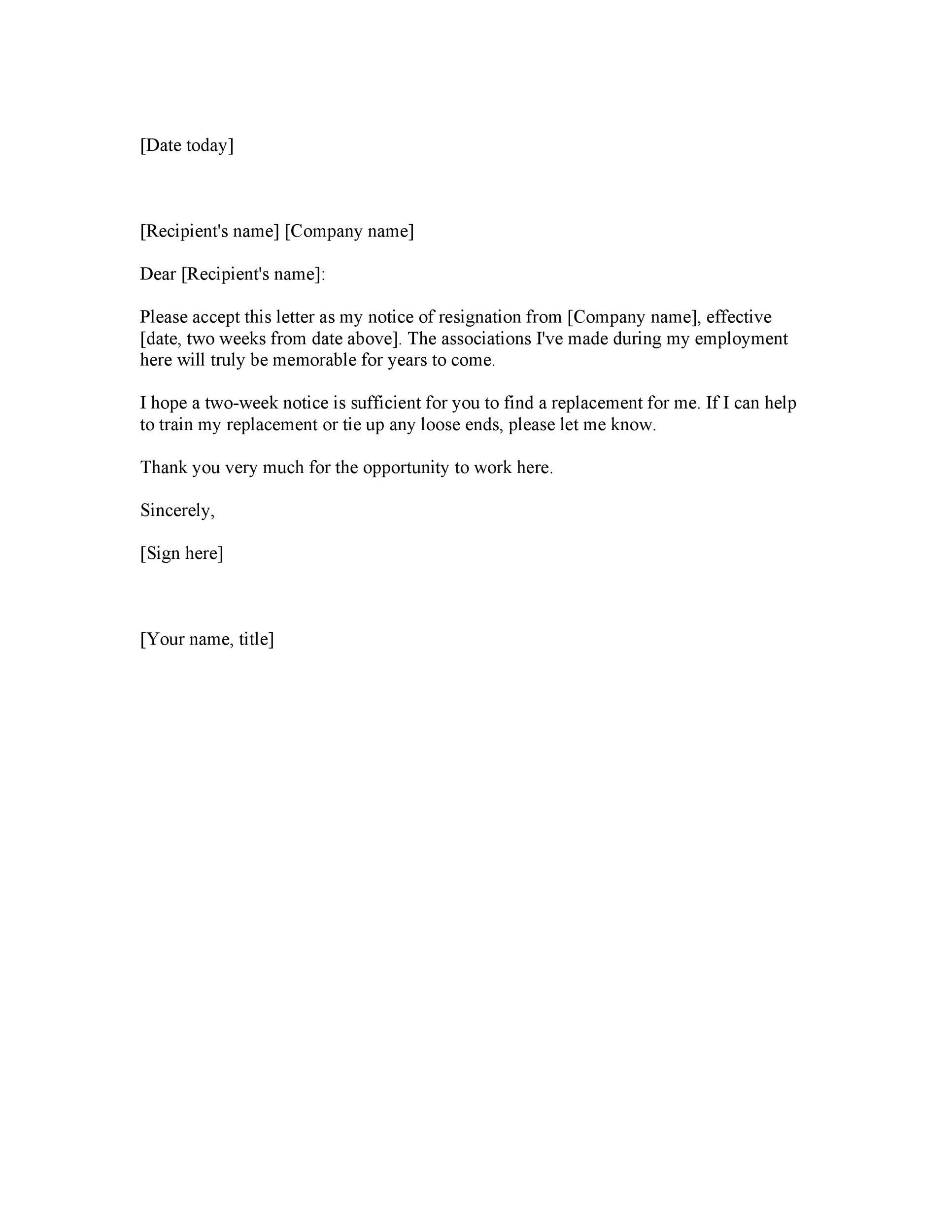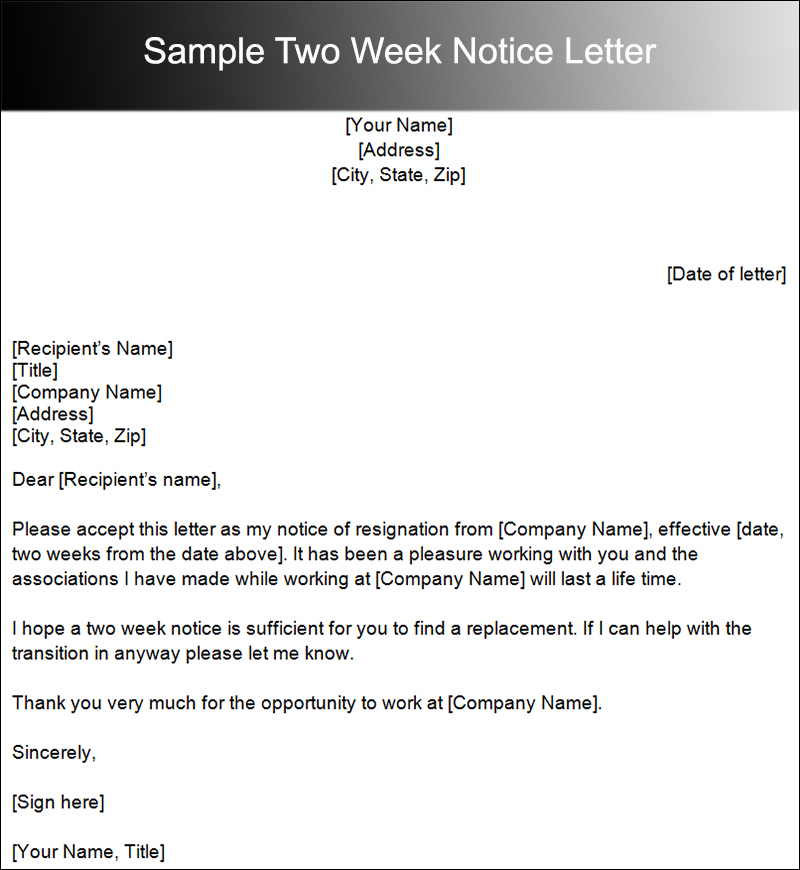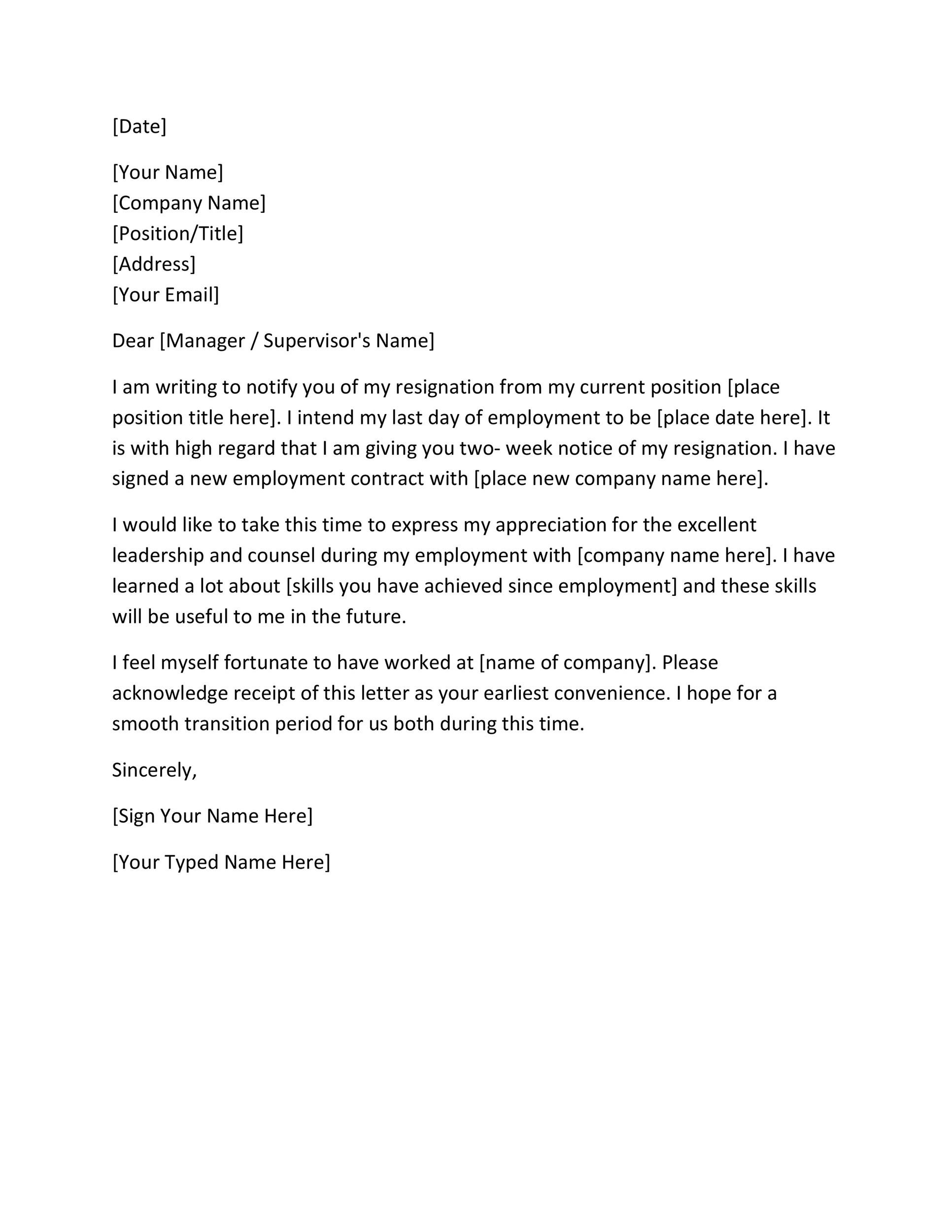Understanding the Concept of Two Weeks’ Notice
A two weeks’ notice is a standard professional courtesy that allows an employee to formally notify their employer of their intention to leave the company. This notice period is typically two weeks, but it can vary depending on the company’s policies or the employment contract. The primary purpose of a two weeks’ notice is to provide the employer with sufficient time to find a replacement, wrap up projects, and make necessary arrangements for the transition of responsibilities.
Providing a two weeks’ notice is essential in maintaining a positive professional relationship with the employer and colleagues. It demonstrates respect for the company and the role, and it helps to avoid burning bridges. A two weeks’ notice also gives the employee an opportunity to tie up loose ends, complete outstanding tasks, and ensure a smooth handover of their responsibilities.
In many industries, a two weeks’ notice is considered a standard practice, and it is often included in employment contracts or company policies. However, it is essential to note that the notice period can vary depending on the company, industry, or location. Some companies may require a longer or shorter notice period, and it is crucial to review the employment contract or company policies to understand the specific requirements.
Understanding what is a two week notice and its significance can help employees navigate the process of leaving a job with professionalism and dignity. By providing a two weeks’ notice, employees can demonstrate their commitment to their role and the company, and they can also ensure that they leave on good terms.
Why Two Weeks’ Notice is Essential for a Smooth Transition
Providing a two weeks’ notice is crucial for a smooth transition, as it allows the employer to find a replacement, train them, and make necessary arrangements for the handover of responsibilities. This notice period also gives the employee an opportunity to wrap up projects, complete outstanding tasks, and ensure that their departure does not disrupt the normal functioning of the business.
A two weeks’ notice is essential for maintaining a positive work environment, as it demonstrates respect for colleagues and the company. It also shows that the employee is committed to their role and is willing to ensure a seamless transition. By providing a two weeks’ notice, employees can help to minimize disruption, reduce stress, and maintain a positive relationship with their employer and colleagues.
During the two weeks’ notice period, the employee can focus on training a replacement, documenting their tasks and responsibilities, and ensuring that their departure does not impact the team’s productivity. This notice period also gives the employer an opportunity to find a suitable replacement, conduct interviews, and make necessary arrangements for the new employee’s onboarding process.
In addition to ensuring a smooth transition, a two weeks’ notice can also help to maintain a positive professional relationship with the employer and colleagues. By providing adequate notice, employees can demonstrate their commitment to their role and the company, and they can also ensure that they leave on good terms. This can be beneficial for future references, recommendations, and networking opportunities.
Overall, providing a two weeks’ notice is essential for a smooth transition, as it allows the employer to find a replacement, train them, and make necessary arrangements for the handover of responsibilities. It also demonstrates respect for colleagues and the company, and it can help to maintain a positive professional relationship.
How to Write a Professional Two Weeks’ Notice Letter
Writing a professional two weeks’ notice letter is an essential step in the process of leaving a job. This letter serves as formal notice to the employer of the employee’s intention to leave the company, and it provides an opportunity to express gratitude for the experience and offer support during the transition.
A well-written two weeks’ notice letter should include several essential elements, such as the date, position, and last day of work. It should also include a statement expressing the employee’s intention to leave the company, as well as a offer to assist with the transition process.
Here is a step-by-step guide to writing a professional two weeks’ notice letter:
1. Start with a formal greeting, addressing the supervisor or manager by their title and last name.
2. Clearly state the intention to leave the company, including the position and last day of work.
3. Express gratitude for the experience and opportunities provided by the company.
4. Offer to assist with the transition process, including training a replacement and wrapping up projects.
5. Provide contact information, including an email address and phone number, in case the employer needs to reach out with questions or concerns.
6. Close the letter with a professional closing, such as a thank you note or a statement expressing appreciation for the opportunity to work with the company.
7. Sign the letter with a formal signature, including the employee’s name and title.
By following these steps, employees can write a professional two weeks’ notice letter that is respectful, courteous, and effective in communicating their intention to leave the company.
Remember, a two weeks’ notice letter is a formal document that will be kept on file by the employer, so it’s essential to proofread it carefully and ensure that it is free of errors and typos.
What to Include in Your Two Weeks’ Notice Conversation
When submitting your two weeks’ notice, it’s essential to have a productive conversation with your supervisor or manager. This conversation should include discussing your reasons for leaving, offering support during the transition, and answering any questions they may have.
Before the conversation, prepare by gathering your thoughts and organizing your key points. Consider the following topics to cover:
1. Reasons for leaving: Be honest and clear about your reasons for leaving the company. This will help your supervisor or manager understand your decision and provide a smooth transition.
2. Offer support during the transition: Express your willingness to assist with the transition process, including training a replacement, wrapping up projects, and providing information to ensure a seamless handover of responsibilities.
3. Answer questions: Be prepared to answer any questions your supervisor or manager may have, such as what you will be doing next, how you will ensure a smooth transition, and what you will do to support the team during your remaining time at the company.
4. Provide a plan for the transition: Offer a plan for how you will complete your outstanding tasks, train a replacement, and ensure that your departure does not disrupt the normal functioning of the business.
5. Show appreciation: Express gratitude for the opportunities you have had while working at the company, and acknowledge the experience and skills you have gained.
During the conversation, be sure to:
1. Listen actively: Pay attention to your supervisor or manager’s concerns and respond thoughtfully.
2. Be respectful: Maintain a professional tone and avoid negative or critical comments.
3. Be open-minded: Be willing to consider feedback and suggestions from your supervisor or manager.
By including these topics in your two weeks’ notice conversation, you can ensure a productive and respectful discussion that sets the stage for a smooth transition.
Common Mistakes to Avoid When Giving Two Weeks’ Notice
When providing a two weeks’ notice, it’s essential to avoid common pitfalls that can damage your professional reputation and relationships with your employer and colleagues. Here are some mistakes to avoid:
1. Giving notice via email or text message: While it may be tempting to send a quick email or text message to inform your employer of your decision to leave, this approach can come across as impersonal and unprofessional. Instead, schedule a meeting with your supervisor or manager to discuss your decision in person.
2. Being negative or critical: Avoid using your two weeks’ notice as an opportunity to air grievances or criticize your employer or colleagues. This can create a negative and uncomfortable work environment, and may damage your professional reputation.
3. Failing to offer support during the transition: One of the primary purposes of a two weeks’ notice is to provide a smooth transition of responsibilities. Make sure to offer your assistance and support during this period, and be available to answer questions and provide information as needed.
4. Not providing a formal letter: A two weeks’ notice letter is a formal document that should be provided to your employer. Make sure to include all the necessary details, such as your position, last day of work, and any other relevant information.
5. Not being prepared for a counteroffer: Your employer may try to persuade you to stay with the company by offering a counteroffer. Be prepared to discuss the pros and cons of staying, and make sure you have a clear understanding of your goals and priorities.
6. Not maintaining a positive work attitude: During your two weeks’ notice period, it’s essential to maintain a positive and professional work attitude. Avoid slacking off or becoming disengaged, and continue to perform your duties to the best of your ability.
7. Not being available to answer questions: Your employer and colleagues may have questions or concerns during your two weeks’ notice period. Make sure to be available to answer these questions and provide information as needed.
By avoiding these common mistakes, you can ensure a smooth and professional transition, and maintain a positive relationship with your employer and colleagues.
How to Handle a Counteroffer After Submitting Your Two Weeks’ Notice
After submitting your two weeks’ notice, your employer may try to persuade you to stay with the company by offering a counteroffer. This can be a tempting proposition, especially if the counteroffer includes a significant salary increase or additional benefits. However, it’s essential to carefully consider the pros and cons of accepting a counteroffer before making a decision.
Pros of accepting a counteroffer:
1. Increased salary or benefits: A counteroffer may include a significant increase in salary or benefits, which can be a major incentive to stay with the company.
2. Improved working conditions: Your employer may offer to improve your working conditions, such as a new role or responsibilities, to make your job more appealing.
3. Enhanced career opportunities: A counteroffer may include opportunities for career advancement or professional development, which can be beneficial for your long-term career goals.
Cons of accepting a counteroffer:
1. Reneging on your decision to leave: Accepting a counteroffer may require you to renege on your decision to leave the company, which can damage your professional reputation and relationships with your employer and colleagues.
2. Limited long-term benefits: A counteroffer may not address the underlying reasons for your decision to leave the company, and may only provide short-term benefits.
3. Potential for burnout: If you accept a counteroffer and stay with the company, you may be at risk of burnout or dissatisfaction with your job, which can negatively impact your mental and physical health.
To handle a counteroffer effectively, consider the following steps:
1. Take time to consider the offer: Don’t rush into a decision. Take time to carefully consider the pros and cons of accepting the counteroffer.
2. Evaluate your goals and priorities: Consider your long-term career goals and priorities, and determine whether accepting the counteroffer aligns with these goals.
3. Negotiate the terms: If you decide to accept the counteroffer, negotiate the terms to ensure that they meet your needs and expectations.
4. Communicate your decision: Once you’ve made a decision, communicate it clearly and professionally to your employer and colleagues.
By carefully considering the pros and cons of accepting a counteroffer, you can make an informed decision that aligns with your career goals and priorities.
What to Do During Your Two Weeks’ Notice Period
During your two weeks’ notice period, it’s essential to make the most of your time to ensure a smooth transition and maintain a positive work attitude. Here are some tips to help you make the most of this period:
1. Wrap up projects: Focus on completing any outstanding projects or tasks, and ensure that your work is up to date. This will help to minimize disruption and ensure that your departure does not impact the team’s productivity.
2. Train a replacement: If possible, train a replacement or colleague to take over your responsibilities. This will help to ensure a seamless transition and minimize disruption to the team.
3. Maintain a positive work attitude: Continue to perform your duties to the best of your ability, and maintain a positive work attitude. This will help to ensure a smooth transition and leave a positive impression on your employer and colleagues.
4. Be available to answer questions: Be available to answer any questions or concerns that your employer or colleagues may have during your two weeks’ notice period. This will help to ensure a smooth transition and minimize disruption to the team.
5. Provide contact information: Provide your contact information to your employer and colleagues, in case they need to reach out to you after your departure. This will help to ensure a smooth transition and minimize disruption to the team.
6. Leave on good terms: Make sure to leave on good terms with your employer and colleagues. This will help to maintain a positive professional relationship and ensure that you can use your employer as a reference in the future.
By following these tips, you can make the most of your two weeks’ notice period and ensure a smooth transition. Remember to stay focused, maintain a positive work attitude, and be available to answer any questions or concerns that your employer or colleagues may have.
Final Tips for a Stress-Free Transition
As you prepare to leave your job, it’s essential to ensure a smooth transition to maintain a positive professional relationship with your employer and colleagues. Here are some final tips to help you achieve a stress-free transition:
1. Be available to answer questions: Make yourself available to answer any questions or concerns that your employer or colleagues may have during your transition period.
2. Provide contact information: Provide your contact information to your employer and colleagues, in case they need to reach out to you after your departure.
3. Leave on good terms: Make sure to leave on good terms with your employer and colleagues. This will help to maintain a positive professional relationship and ensure that you can use your employer as a reference in the future.
4. Tie up loose ends: Ensure that you complete any outstanding tasks and projects, and tie up any loose ends before your departure.
5. Maintain a positive attitude: Continue to maintain a positive attitude and work ethic during your transition period. This will help to ensure a smooth transition and leave a positive impression on your employer and colleagues.
6. Be respectful: Be respectful of your employer and colleagues during your transition period. Avoid negative or critical comments, and maintain a professional tone.
7. Keep your departure private: Keep your departure private and avoid discussing it with colleagues or clients until your employer has made an official announcement.
8. Be prepared for a counteroffer: Be prepared for a counteroffer from your employer, and consider the pros and cons of accepting it before making a decision.
By following these final tips, you can ensure a smooth transition and maintain a positive professional relationship with your employer and colleagues.







